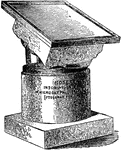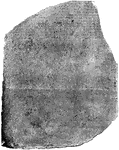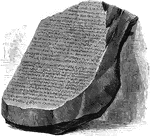Clipart tagged: ‘Rosetta Stone’
Rosetta Stone
"In 1799, the Rosetta Stone was found and gave the first key to the reading of hieroglyphics. On this…

Rosetta Stone
"Rosetta Stone is the name given to a stone found near the Rosetta mouth of the Nile by a French engineer…
Excerpt from the Rosetta Stone
"In 1799, the Rosetta Stone was found and gave the first key to the reading of hieroglyphics. On this…

Rosetta Stone Sample
"In 1799, the Rosetta Stone was found and gave the first key to the reading of hieroglyphics. On this…

The Rosetta Stone, Front View
A fragment of an Ancient Egyptian text, which provided the key to the modern understanding of Egyptian…

Portion of Rosetta Stone
"In the Nile valley there had been found a few ancient inscriptions, carved upon stone in unknown characters,…
